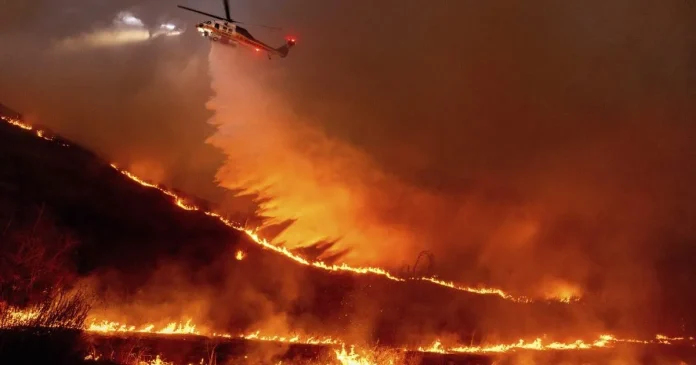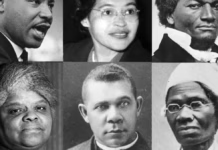LA Wildfires have long been part of California history, but the ravenous flames currently burning Los Angeles are a stern reminder of how destructive they can be. With winds that can easily rip roofs from houses and dry conditions beneath, so far, at least 10 people have lost their lives; dozens have been injured, and hundreds of thousands of people are displaced from their homes. Here is everything we know about these disastrous fires, their origin, and their impact on the city.
How Big Are the LA Wildfires?
Five major wildfires are raging in Los Angeles at present, burning unabated in the city. The biggest among these, the Palisades Fire, has engulfed around 20,000 acres and damaged more than 1,000 buildings. This is the most destructive fire Los Angeles has ever faced, LA Fire Chief Kristin Crowley says, adding that the blaze has a mere 6% containment. Another massive blaze, the Eaton Fire, has burned through 13,690 acres and has yet to be contained at all.
Others that have burned hundreds of acres are the Hurst Fire, Lidia Fire, and the recently started Kenneth Fire. While it is true that some of them have been put under control by firefighters, this is not even the end of it. These fires have left devastation in their trail, which is both staggering and heartbreaking.
Also read: School Closures in LA Due to California Wildfires: Full Overview
Evacuations and Losses
As many as 179,783 people are under mandatory evacuation orders, and another 200,000 are under evacuation warnings. Thousands of homes, businesses, and landmarks were reduced to ashes, including the Hollywood Walk of Fame and surrounding Griffith Observatory. Financial tolls are just equally devastating: preliminary estimates say that losses are at over $10 billion.
How Did LA Fires Start?
Fires begin on Tuesday morning as a consequence of natural environmental conditions. The main cause was the wind, referred to as the Santa Ana, which circulated at a speed of up to 100 mph. Such strong and dry winds can be called an “atmospheric blow-dryer” as they spread the flames so fast and absorb moisture in plants, rendering them more flammable.
While the exact ignition points of some fires are still under investigation, the Palisades Fire was reportedly caused by a brush fire, while the Eaton Fire ignited near canyon lands. Climate experts and officials have said that climate change is at the root of it all, noting unseasonably dry conditions and high temperatures as main contributors.
Why Are Fires Occurring in January?
LA Wildfires season typically begins in May, but recent years have seen a disturbing trend: wildfires occurring year-round. This is largely due to changing weather patterns and prolonged droughts linked to climate change.
The Santa Ana winds, which are frequent during winter, have contributed to the disaster. These winds not only fan the flames but also suck moisture from the vegetation, making it an excellent breeding ground for fires to start and spread. California Governor Gavin Newsom has termed this as a “new normal,” emphasizing the state’s susceptibility to climate-related disasters.
The Fast Spread: How Fast Did the Fires Grow?
The rapid growth of the fires speaks to the perfect storm of conditions fueling them. The Palisades Fire, for instance, grew from 15,000 acres to nearly 20,000 acres in just 24 hours. The Eaton Fire also exploded to 10,000 acres overnight.
High winds, dry vegetation, and low humidity have made containment efforts exceedingly difficult. Firefighters have faced additional challenges, including water shortages and limited access to some of the affected areas.
Impact on Lives and Communities
The human toll of these fires is immeasurable. In addition to the 10 confirmed fatalities, dozens of people have been injured, and thousands have been displaced. Families have lost their homes, cherished possessions, and livelihoods.
Celebrities have not been spared either. Paris Hilton, Diane Warren, and Ricki Lake are some of the celebrities who have lost their homes. Several Hollywood productions have been shut down, and the annual Critics Choice Awards have been canceled because of the fires.
Also read: California Fires Map: Palisades & Eaton Fire Updates
Firefighting Efforts
Firefighters are working day and night to contain the flames, with over 500 military personnel, 30 helicopters, and multiple firefighting planes used in that regard. Still, the challenging nature of the fires has left many hydrants dry, which further makes it hard to contain the flames.
President Joe Biden declared a major disaster in California, which unsealed federal funding to help the state fight the fires and rebuild. President-elect Donald Trump recently criticized the way the state handles its water supply, reigniting debates over infrastructure and preparedness.
Looting and Law Enforcement
As if the fires weren’t enough, authorities have had to contend with reports of looting in evacuated areas. LA County Sheriff Robert Luna has issued stern warnings, stating that anyone caught looting will be arrested and prosecuted. Twenty arrests have already been made, with more expected in the coming days.
The Road Ahead: When Will the Fires End?
The worst is yet to come as winds are slowing, but conditions remain dangerous for most of the weekend. Climate scientist Daniel Swain said the worst fires would still occur when drier vegetation sprouts up following the dying embers of the strongest winds. Red flag warnings are in place, and critical humidity is still expected to stay low.
How to be Safe?
As a citizen, you must take care of yourself and make sure that you and your family are safe and not adding additional burden to the forces working tirelessly. You must follow all the guidelines that are mentioned on the official website, and try to assist the government in every possible way.
Also read: Karen Bass and the Los Angeles Wildfires: Leadership Response
Lessons Learned and the Way Forward
The LA wildfires serve as a grim reminder of the challenges posed by climate change and urban expansion. They underscore the need for better infrastructure, more robust fire prevention measures, and increased investment in emergency services.
As the city embarks upon the long healing process, people’s resilience will surely come forward. For the time being, Los Angeles comes together in sadness and determination to overcome this dark chapter.








